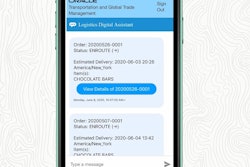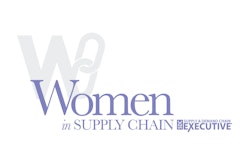
One of the best ways to improve modern supply chains is to transform them into demand chains—interconnected systems of manufacturers, distributors, retailers and now consumers that share digital information throughout the life of a product. What better way to forecast, plan and execute the manufacture and delivery of products than to track them even as consumers shop, purchase and live with everything from clothes to tools to packaged goods?
This demand chain is enabled by digital tags—small, battery-free, Bluetooth-enabled, encrypted identification (ID) tags affixed to products, components and packaging as they move through the chain. Think of them as stamp-sized computers that power themselves and are perpetually connected to the Internet.
As tagged products move from manufacturer to consumer, they’re read by “gateway” devices—readers on the shop floor, smartphones, tablets, smart speakers, Wi-Fi access points, Bluetooth-to-mobile cellular gateways or even lighting fixtures that can read Bluetooth signals. Each time a gateway reads the encrypted tag ID, it relays data to a secure location in the Internet cloud. The chain starts, for example, with understanding where in production a product may be, then eventually begins logging, where in a store it’s positioned (plus, when and how often it’s tried on perhaps), and finally—potentially—who buys the product and how they use it.
5 principles of data ownership in the demand chain
We can’t realize the enormous benefits of an integrated demand chain without addressing issues of data privacy and protection – specifically, who owns the data generated along the demand chain and what can they do with it. For example, when a brand contracts with a manufacturer to make a product, how do they coordinate the sharing of data? When a consumer purchases the product, what are their rights to the data created by a digital tag?
These are complex issues, but by following five principles of data ownership and privacy, the many benefits of demand chain economics are achievable.
1. Whoever owns the tag owns the data and is accountable for how it’s used. For example, if a manufacturer purchases cloud-connected tags from a tag provider and affixes them to garments during assembly, the manufacturer—owns the data until sale of the finished goods. When a consumer purchases a product, they own the data and have total say over its use. Clearly, for manufacturers and brands, the sharing of technology costs and access to data may become a point of negotiation between parties, in which case, jump to the next principle.
2. Manufacturers, brands and retailers (and anyone else along the chain) should understand they gain more from sharing data from tags attached to products than by keeping it proprietary. That’s how the demand chain will yield its greatest benefits. While a manufacturer owns the data when it’s incorporating tags into products, others in the demand chain, including the retailer, could benefit from data generated during manufacturing. Still, the tag owner must agree and see fit to grant data access to other parties in the demand chain.
3. Ownership of a tag doesn’t grant ownership of data gathered previously, nor does it prevent ownership of the tag from being transferred back to a previous owner or ahead to a new one. When ownership of a tag passes from manufacturer to retailer, for example, then control of the keys used to decrypt the digital ID must be transferred to the new owner. Now, the ability to read a tag doesn’t give the current owner a complete picture, therefore, as mentioned earlier, parties should agree to a layer of data sharing to reap the most benefit. And of course, consumers of connected products, as owners, have the right to turn off the flow of data.
4. Consumers must opt in to use of a tag on a product they own. They need to know it’s there and they need to agree to its ongoing operation while the product is in their possession. The option to opt out is not sufficient. And, any data created during the time they own a tagged product—including the fact that they own it—must be protected under applicable privacy regulations, such as Europe’s General Data Protection Regulation (GDPR) and the Californian Consumer Privacy Act (CCPA). This critical step will require solutions from the demand chain. Given that getting customers to opt-in is required, how does one obtain this consent? We may find the solution in the increasingly ubiquitous smartphones and smart speakers that can read the tags, or in new technology integrated into point-of-sale systems. Or, it could be that wireless carriers become the identity provider of choice and products become associated with a consumer’s mobile number. Whatever the solution, the guiding principle is the same--consumers must opt in.
5. Companies must be transparent about the use of tags and offer real value in exchange for data. However we enable consumer opt-in, people will only get in the habit of connecting products to the cloud-based demand chain if they understand it’s happening and there’s something in it for them. Use cases could include authenticating a product is real, food safety tracking, auto-replenishment with preferred pricing, usage guidance, lost-and-found services. Tags that continually track products could be a big benefit to consumers, but companies will need to communicate those benefits for the demand chain to reach its potential.
Demand chain extends beyond the consumer
Applying these five principles of data ownership will also help address other issues, such as waste management and recycling. To enable recycling, for instance, waste management facilities will need access to the data associated with digital tags on discarded products so they can unlock information about a product’s components, as well as relevant recycling instructions. Given the principles of data ownership along the demand chain, this type of information transfer may be challenging, but it’s feasible—and important.
Ultimately, the tech-enabled demand chain is revolutionary because it allows what happens at all stages to drive production, consumption and disposal (or re-use). Digital tag technology gives chain participants—including consumers—potential transparency into the history of a product, provided data is governed responsibly along the way. To realize all the benefits of an integrated demand chain, data sharing and privacy are critical.





















